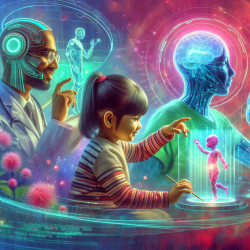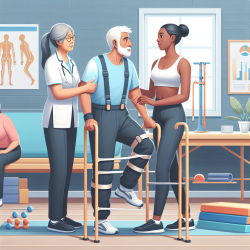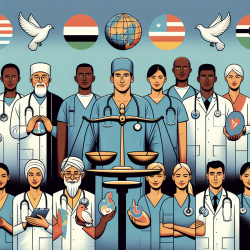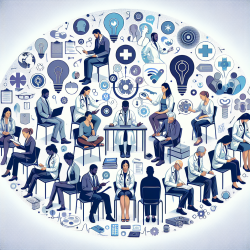Introduction
In the rapidly evolving landscape of biomedical research, artificial intelligence (AI) stands as a beacon of transformative potential. The study titled "Translatability Analysis of National Institutes of Health–Funded Biomedical Research That Applies Artificial Intelligence" provides a comprehensive examination of how AI applications in biomedical research can be translated into clinical practice. This blog aims to distill the key findings of this study and explore how practitioners, especially those focused on child development, can leverage these insights to improve outcomes.
Understanding Translatability in AI Applications
The research conducted by Eweje et al. (2022) highlights the varying degrees of translational impact across different AI applications. By analyzing 16,629 NIH-funded awards, the study identified 75 unique medical applications of AI, using metrics such as the Approximate Potential to Translate (APT) score and Annualized Citations per $1 million funding (ACOF). These metrics provide a quantifiable measure of an AI application's potential to impact clinical practice.
Key Findings and Implications for Child Development
Among the applications with high translatability, interpersonal communication technologies and population genetics stood out. These areas hold significant promise for enhancing child development, particularly in speech and language pathology. Interpersonal communication technologies, with an APT score of 0.488, can revolutionize how we support children with communication impairments, offering innovative solutions such as brain-computer interfaces and eye-tracking technologies.
For practitioners in child development, these findings underscore the importance of integrating AI-driven tools into therapeutic practices. By doing so, we can enhance the effectiveness of interventions and provide more personalized support to children, ultimately leading to better developmental outcomes.
Encouraging Further Research and Application
While the study provides valuable insights, it also highlights areas with lower translatability, such as biochemical analysis. This indicates a need for further research to bridge the gap between AI innovations and their clinical applications. Practitioners are encouraged to engage with ongoing research and contribute to the development of AI tools that can be seamlessly integrated into existing clinical workflows.
Conclusion
As we stand on the cusp of an AI-driven revolution in healthcare, the potential to enhance child development outcomes is immense. By embracing data-driven approaches and leveraging AI applications with high translational potential, practitioners can make informed decisions that lead to significant improvements in clinical practice.
To read the original research paper, please follow this link: Translatability Analysis of National Institutes of Health–Funded Biomedical Research That Applies Artificial Intelligence.










